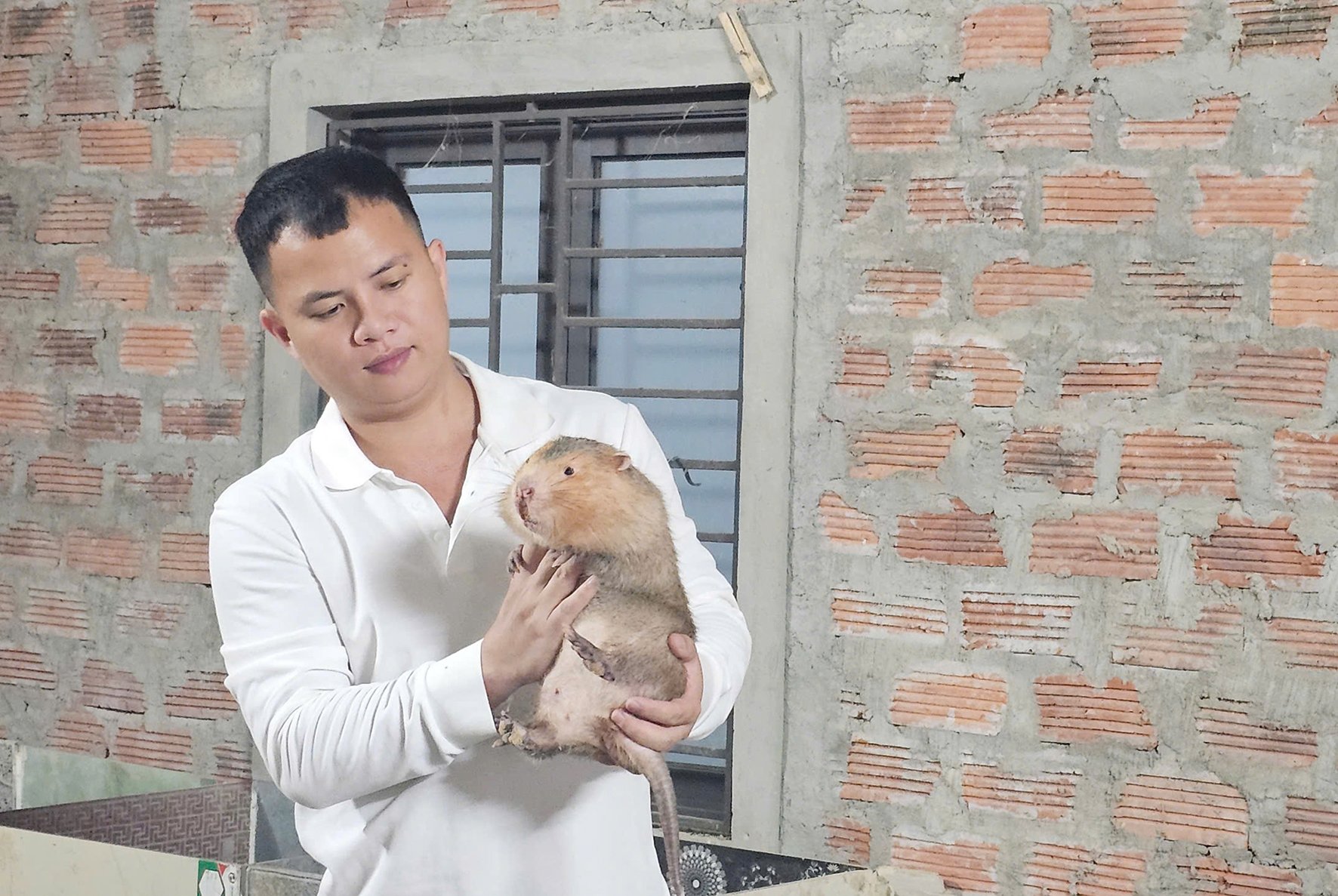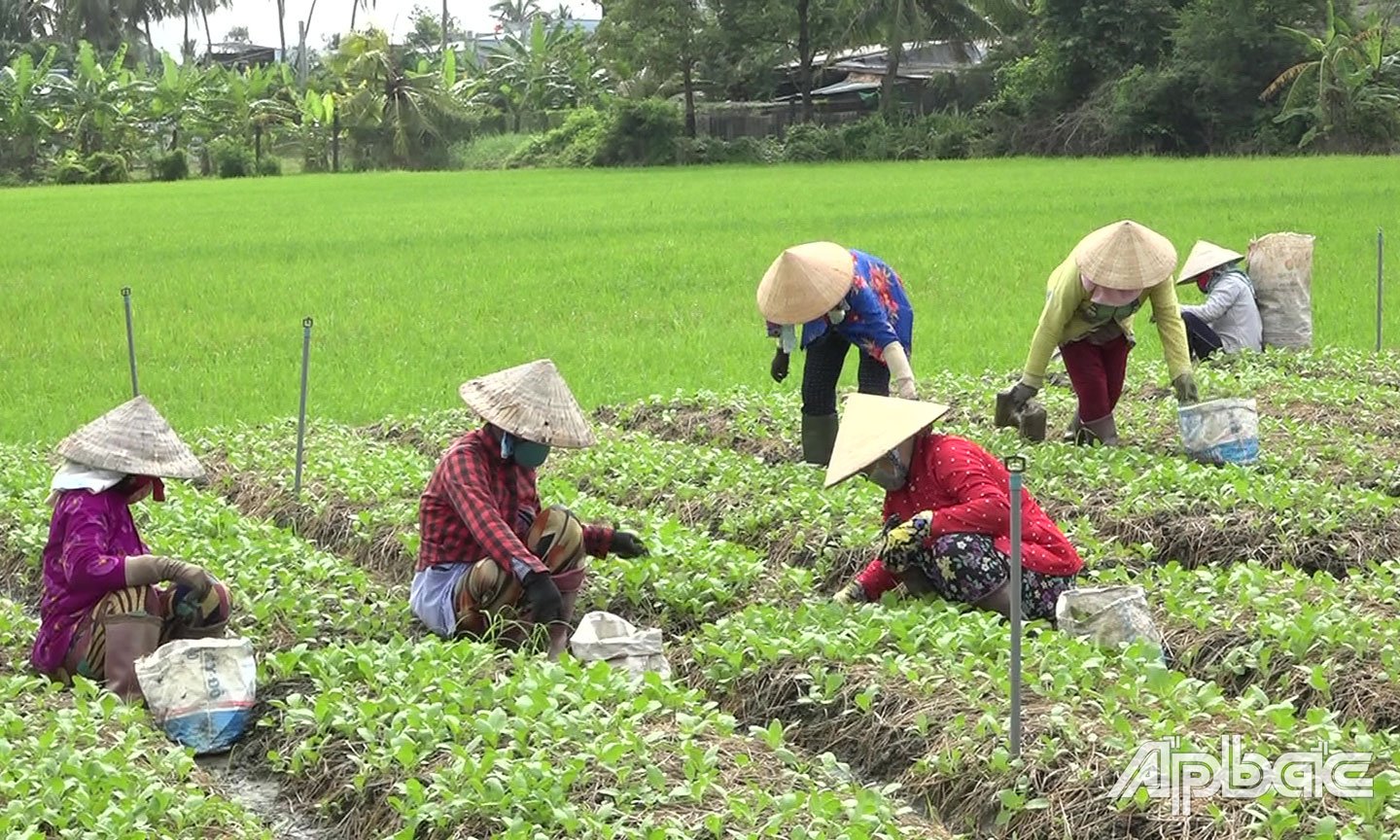Mr. Lam introduces his family's bamboo rat farming model - Photo: NP
We visited Mr. Lam’s breeding model when he was busy instructing workers to install the lighting system, completing the final step before putting the new rat farm into operation. It is called a “farm”, but in fact, it is a house built on 4 sides, with a cement floor. The square cages are separated from each other by large, different-sized tiles.
Mr. Lam shared: “The cage for raising bamboo rats made like this not only saves space but also ensures ventilation, dryness, and easy cleaning. Moreover, it also prevents bamboo rats from digging holes to escape and harmful animals such as rats and snakes from crawling in. Depending on the age of the bamboo rats, I will arrange them in cells of appropriate sizes. Currently, bamboo rats are available to “fill” the new cage.”
Thus, after nearly 7 years of raising rats, Mr. Lam has expanded his rat farming scale to 3 farms with the current number of 250 adult rats and 50 baby rats.
Looking back on his entrepreneurial journey, Mr. Lam said that he “got involved” with the bamboo rat breeding business in 2018. After a period of specializing in supplying bamboo rat litter to restaurants and eateries in the area, he was “tipped off” and decided to import 20 pairs of peach-cheeked bamboo rats to raise.
However, this is a wild animal, so the lack of adaptation to the weather, climate and food, combined with Mr. Lam's lack of experience, caused the rats to get sick at first, and some of them died. Instead of being discouraged by the difficulty, he proactively searched for ways to care for rats from successful models on the internet to learn and gain experience for himself.
“The cage is one of the first factors that determine the success or failure of raising bamboo rats. This animal will grow best in a quiet space, with little noise and limited direct sunlight. Priority should be given to locations that are cool in the summer and warm in the winter to build cages for bamboo rats,” said Mr. Lam.
This change in care helps his rats gradually adapt well to the living environment. After more than 8 months of care, he started to pair the rats to reproduce. It is known that rats are pregnant for about 45 days before giving birth. Each year, rats give birth 3 litters, each litter has 4-5 babies. After 2.5 months of birth, the baby rats can be separated from their mother, raised for about 2 more months before being sold as breeds.
According to Mr. Lam, the demand for bamboo rats is now quite high because the meat quality of this animal is delicious. This rodent is also very easy to raise, requires little care and grows strongly if the breeder knows how to care for it properly. The main food sources are fresh bamboo stems, fresh sugarcane, corn kernels, sweet potatoes, cassava, cold rice, elephant grass, which are not very expensive and also ensure a safe food source.
Currently, Mr. Lam mainly breeds to supply to those in need inside and outside the province. Depending on the weight, the bamboo rats will have different prices, ranging from 4 - 5 million VND/pair. The number of people in need of buying bamboo rats is high, and people often come to his house to ask to buy, so he is not worried about the output.
During our conversation, Mr. Lam had to stop several times because customers kept calling to order seeds. On average, this model brings him a revenue of over 300 million VND per year, while also creating regular jobs for 3-4 workers.
With the desire to expand and develop this economic model, Mr. Lam is always willing to share his experience in raising bamboo rats with anyone in need.
“The current market for commercial bamboo rats is not yet fully supplied. Bamboo rats are considered a specialty, so they are chosen by many gourmet diners. Therefore, in addition to selling breeds, I do not hesitate to share my experience with anyone who comes to learn so that they can succeed with this model right from their first time raising them,” Lam confided. In the future, if the breeding continues to achieve good results, he will expand the scale of production, increase the herd to provide more breeds and commercial bamboo rats to the market.
Nam Phuong
Source: https://baoquangtri.vn/phat-trien-kinh-te-tu-nuoi-dui-192822.htm



![[Photo] Overcoming all difficulties, speeding up construction progress of Hoa Binh Hydropower Plant Expansion Project](https://vstatic.vietnam.vn/vietnam/resource/IMAGE/2025/4/12/bff04b551e98484c84d74c8faa3526e0)

![[Photo] Closing of the 11th Conference of the 13th Central Committee of the Communist Party of Vietnam](https://vstatic.vietnam.vn/vietnam/resource/IMAGE/2025/4/12/114b57fe6e9b4814a5ddfacf6dfe5b7f)



























































































Comment (0)